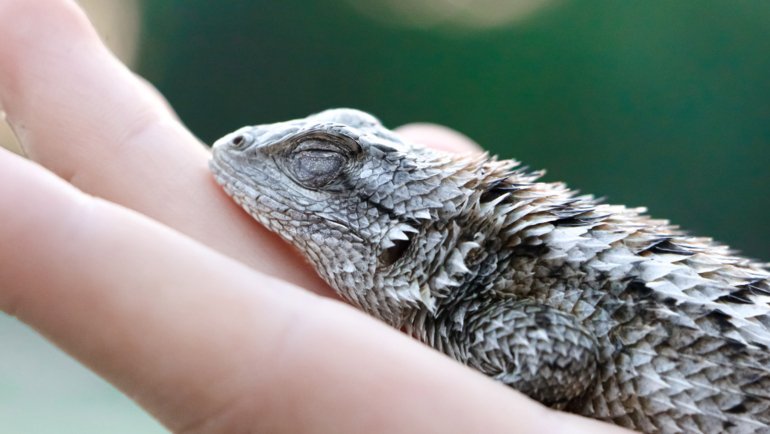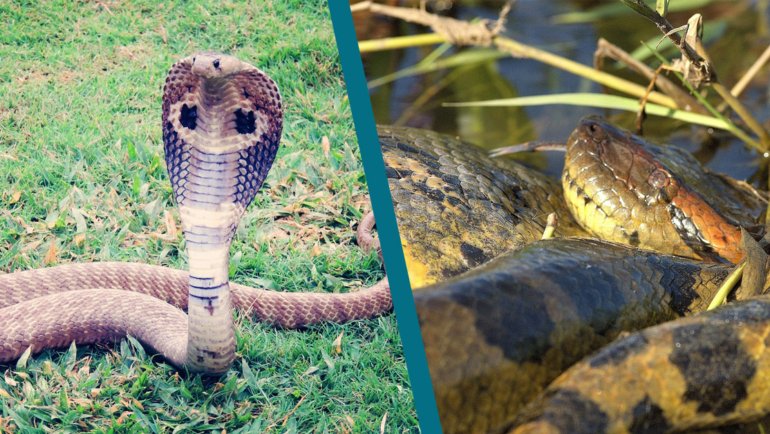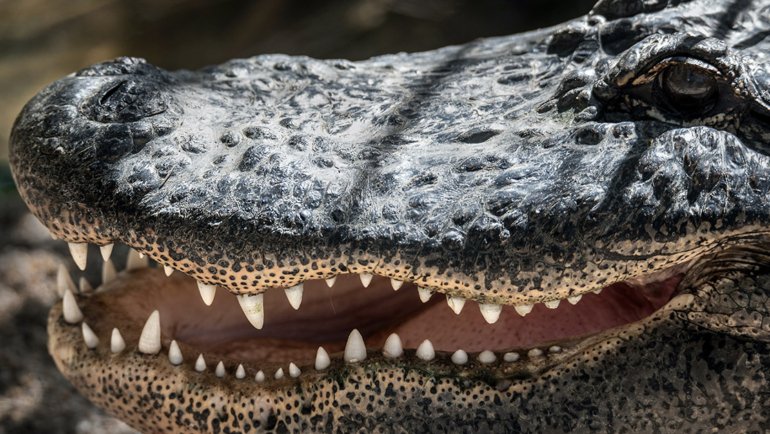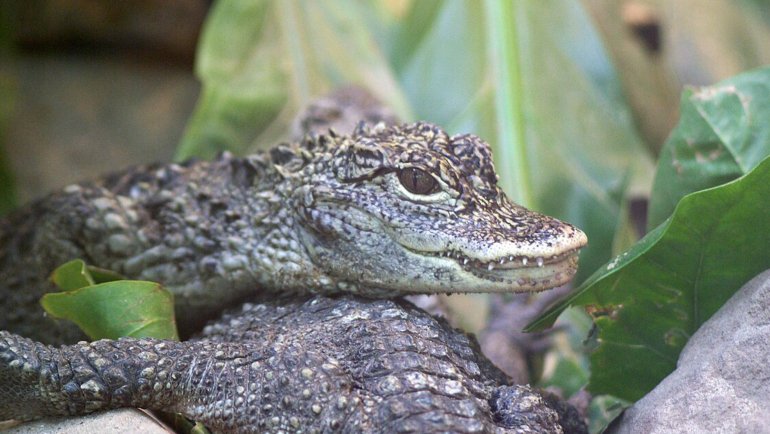Caimans, a group of reptiles closely related to alligators and crocodiles, are fascinating creatures that inhabit the wetlands of Central and South America. These semi-aquatic animals excel in both terrestrial and aquatic environments, making them formidable hunters in their own right. With their armored skin, sharp teeth, and powerful tails, caimans are well-equipped to maintain their position as apex predators in many of their natural habitats. They primarily feed on fish, birds, and small mammals, playing an essential role in maintaining the ecological balance within their ecosystems by controlling the populations of these species.
Despite their predatory prowess, caimans are not invincible and do have natural predators that keep their populations in check. This is particularly true for young caimans, who are more vulnerable to attacks from other animals. Understanding the dynamics between caimans and their predators offers valuable insights into the complex food webs that sustain biodiversity in tropical ecosystems. This article will explore the top predators of caimans, delving into the fascinating interactions these reptiles have with their natural enemies.
Top 5 Predators of Caimans
Jaguars
Jaguars are one of the most formidable predators of caimans, particularly targeting younger or smaller individuals. These powerful big cats are native to the rainforests and savannas of Central and South America, habitats that overlap significantly with those of caimans. Jaguars are known for their exceptional strength and stealth, which they utilize to ambush caimans at the water’s edge. The jaguar’s powerful jaws are capable of piercing the caiman’s tough hide, delivering a killing bite to the skull.
In many instances, jaguars will prey on caimans during the dry season when water levels are lower, making caimans more accessible. Jaguars are adept swimmers, which allows them to pursue caimans in both terrestrial and aquatic environments. This versatility makes the jaguar a particularly effective predator of caimans, capable of exploiting their vulnerabilities both in and out of the water.
Anacondas
Anacondas, particularly the green anaconda, are another predator that poses a significant threat to caimans. These large, non-venomous snakes are among the heaviest in the world and are known for their ability to constrict and subdue prey much larger than themselves. Anacondas typically inhabit swamps and marshes, sharing their habitat with caimans.
Caimans are most vulnerable to anaconda attacks when they are in or near water. Anacondas will often ambush caimans by lurking beneath the surface, striking with lightning speed to coil around their prey. Once constricted, the caiman is unable to escape and succumbs to the anaconda’s immense pressure. This predation strategy allows anacondas to effectively hunt caimans, particularly those that are juvenile or weakened.
Large Birds of Prey
Birds of prey, such as the harpy eagle, play an important role in the food chain by preying on caiman hatchlings and juveniles. These birds are equipped with strong talons and keen eyesight, enabling them to spot caimans from great distances. Harpy eagles, one of the largest eagle species, have been known to carry off young caimans to feed on.
The predatory behavior of large birds of prey is particularly effective during the caimans’ nesting season. As young caimans emerge from their eggs, they become prime targets for these aerial hunters. The vulnerability of hatchlings makes them an easy target, and the presence of these birds in the ecosystem serves as a check on caiman populations.
Adult Caimans
Interestingly, adult caimans themselves can pose a threat to younger individuals. Cannibalism is not uncommon among caimans, particularly when food resources are scarce. Larger caimans may prey on juveniles or even weaker adult caimans.
This natural behavior serves as a mechanism for population control, ensuring that only the strongest individuals survive and pass on their genes. Cannibalism among caimans highlights the intense competition for resources within their habitats and the complex interactions that can occur even among members of the same species.
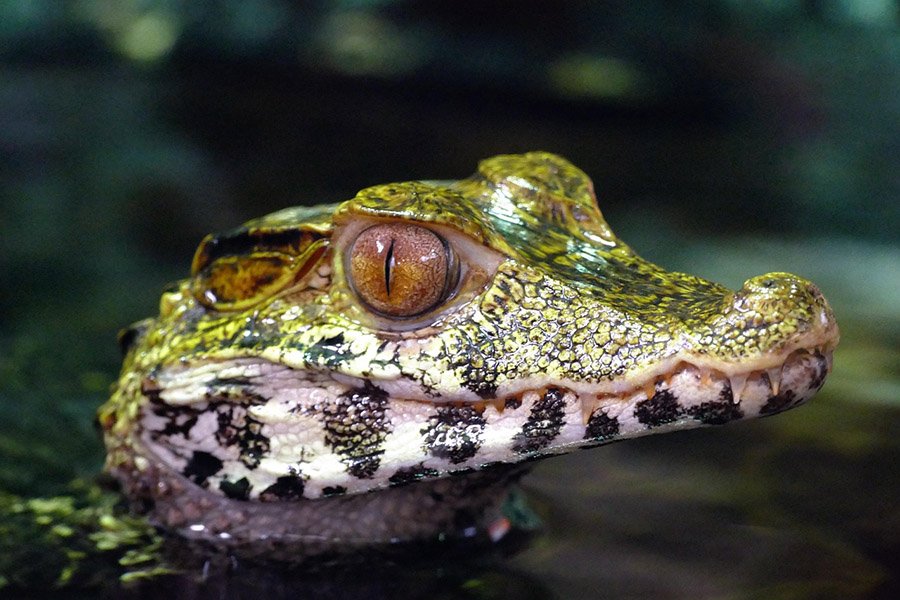
Humans
Humans are perhaps the most significant predator of caimans, impacting their populations through hunting and habitat destruction. Caimans are often hunted for their skins, which are used in the leather industry, and for their meat, which is considered a delicacy in some cultures.
Human activities such as deforestation and wetland drainage also threaten caiman habitats, reducing their numbers and the availability of resources. Conservation efforts are crucial to protect caiman populations and ensure that they continue to thrive in their natural environments.
How Do Caimans Defend Themselves?
Caimans have evolved a range of defenses to protect themselves from predators. One of their primary defenses is their tough, scaly skin, which serves as armor against physical attacks. This protective layer makes it difficult for predators to inflict serious harm, particularly from bites or scratches.
In addition to their physical defenses, caimans are adept at using their environment to their advantage. Their ability to remain submerged for extended periods allows them to avoid detection from land-based predators. When threatened, caimans can dive underwater and remain hidden until the danger passes.
Caimans also rely on their powerful tails as a means of defense. In a confrontation, they can use their tails to deliver strong, sweeping blows to deter predators. This combination of speed and force can be enough to dissuade many would-be attackers.
Moreover, caimans are known for their vocalizations, which they use to communicate danger to other members of their group. These sounds can alert fellow caimans to the presence of predators, allowing them to take collective action to defend themselves. This social aspect of their behavior plays a crucial role in their survival.
Frequently Asked Questions
What do caimans eat?
Caimans primarily feed on fish, birds, and small mammals, but their diet can also include insects and crustaceans.
Where do caimans live?
Caimans inhabit the wetlands, rivers, and swamps of Central and South America, thriving in both freshwater and occasionally brackish environments.
Are caimans dangerous to humans?
While caimans can be dangerous if provoked, they generally avoid humans and attacks are rare. Proper caution and respect for their habitat can minimize risks.
What is the lifespan of a caiman?
Caimans can live for 30 to 50 years in the wild, depending on the species and environmental conditions.
How do caimans reproduce?
Caimans reproduce by laying eggs, with females often creating nests in sandy or muddy banks. The incubation period varies, but it typically lasts around 65 to 90 days.
